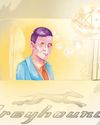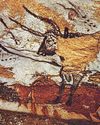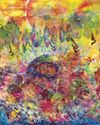
“These are the principles for the development of a complete mind: Study the science of art. Study the art of science… Realize that everything connects to everything else.”
- Leonardo da Vinci
The five-hundredth anniversary of the death of Leonardo da Vinci (1452-1519) presents an important occasion to reflect not only on the maestro’s incredible work and life but perhaps more importantly, on his mind. Not only does Leonardo’s work provide profound insights into his worldview, but his worldview provides profound insights into his work.
Leonardo sought to maximize the thinking and being of every lived moment. Perhaps this is why he insisted that “time stays long enough for those who use it,” and that “a life well spent is long.” How else was he able to enquire and create to such an astonishing extent in a single lifetime?
What is undisputedly clear is that Leonardo had the mind of the quintessential polymath, characterized by remarkable self-awareness, insatiable curiosity, exceptional intelligence, unparalleled versatility, a heightened sense of imagination, and a vision of unity. When I interviewed the art historian Martin Kemp, a leading expert on Leonardo, he remarked: “The mind of Leonardo is a mind that is entirely curious, like a child – [asking] why does that happen? what am I looking at? how can I understand it? – and if you combine that sort of child-like curiosity with enormous intellectual power, you get something very potent.” (The Polymath: Unlocking the Power of Human Versatility, Waqās Ahmed, 2019. Quotes from this unless otherwise stated). What can we learn from this today?
Systems & Connections
Esta historia es de la edición October/November 2019 de Philosophy Now.
Comience su prueba gratuita de Magzter GOLD de 7 días para acceder a miles de historias premium seleccionadas y a más de 9,000 revistas y periódicos.
Ya eres suscriptor ? Conectar
Esta historia es de la edición October/November 2019 de Philosophy Now.
Comience su prueba gratuita de Magzter GOLD de 7 días para acceder a miles de historias premium seleccionadas y a más de 9,000 revistas y periódicos.
Ya eres suscriptor? Conectar

Metaphors & Creativity
Ignacio Gonzalez-Martinez has a flash of inspiration about the role metaphors play in creative thought.

Medieval Islam & the Nature of God
Musa Mumtaz meditates on two maverick medieval Muslim metaphysicians.

Robert Stern
talks with AmirAli Maleki about philosophy in general, and Kant and Hegel in particular.

Volney (1757-1820)
John P. Irish travels the path of a revolutionary mind.

IT'S A WONDERFUL LIFE
Becky Lee Meadows considers questions of guilt, innocence, and despair in this classic Christmas movie.

"I refute it thus"
Raymond Tallis kicks immaterialism into touch.

Cave Girl Principles
Larry Chan takes us back to the dawn of thought.

A God of Limited Power
Philip Goff grasps hold of the problem of evil and comes up with a novel solution.

A Critique of Pure Atheism
Andrew Likoudis questions the basis of some popular atheist arguments.

Exploring Atheism
Amrit Pathak gives us a run-down of the foundations of modern atheism.